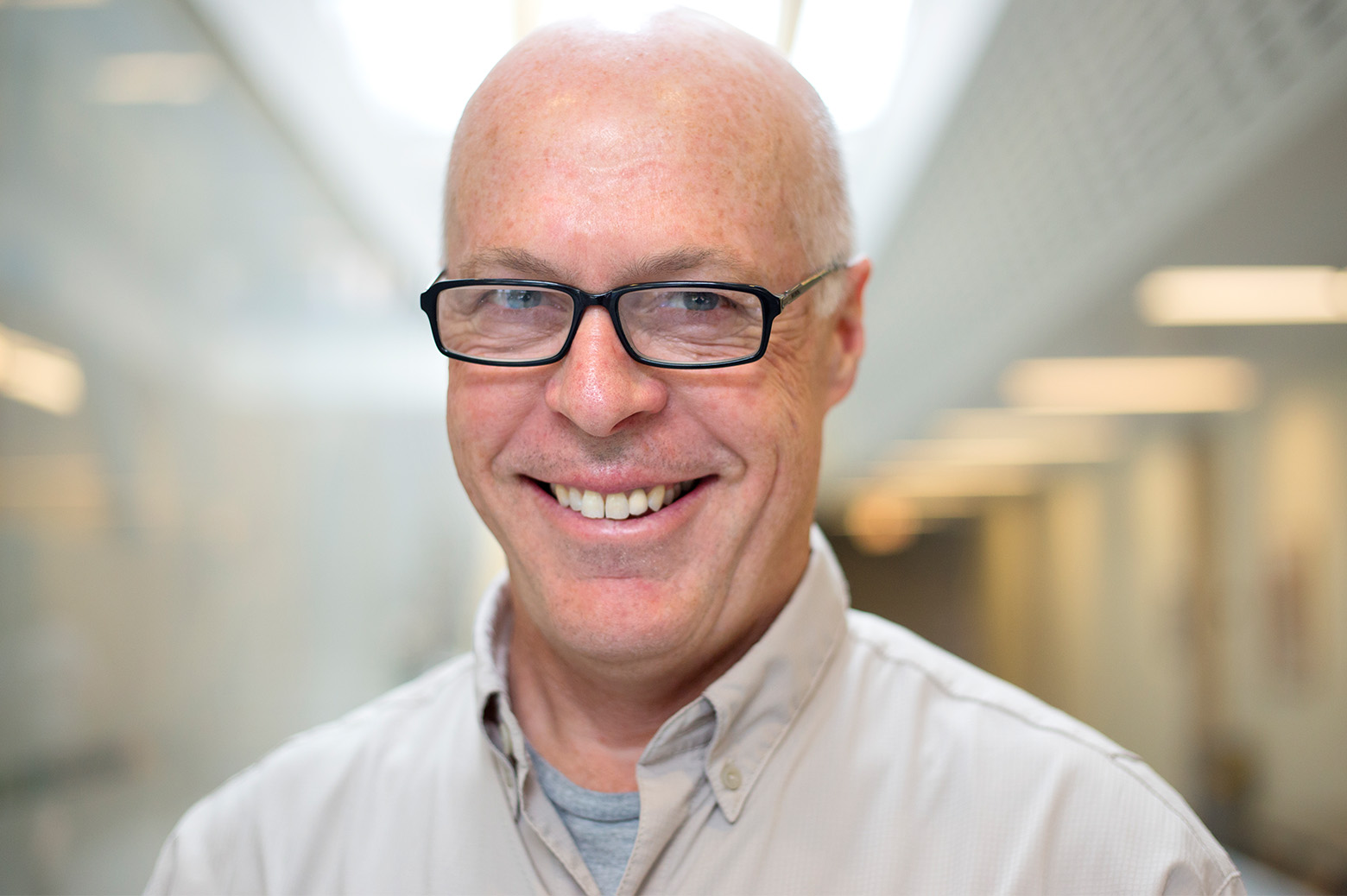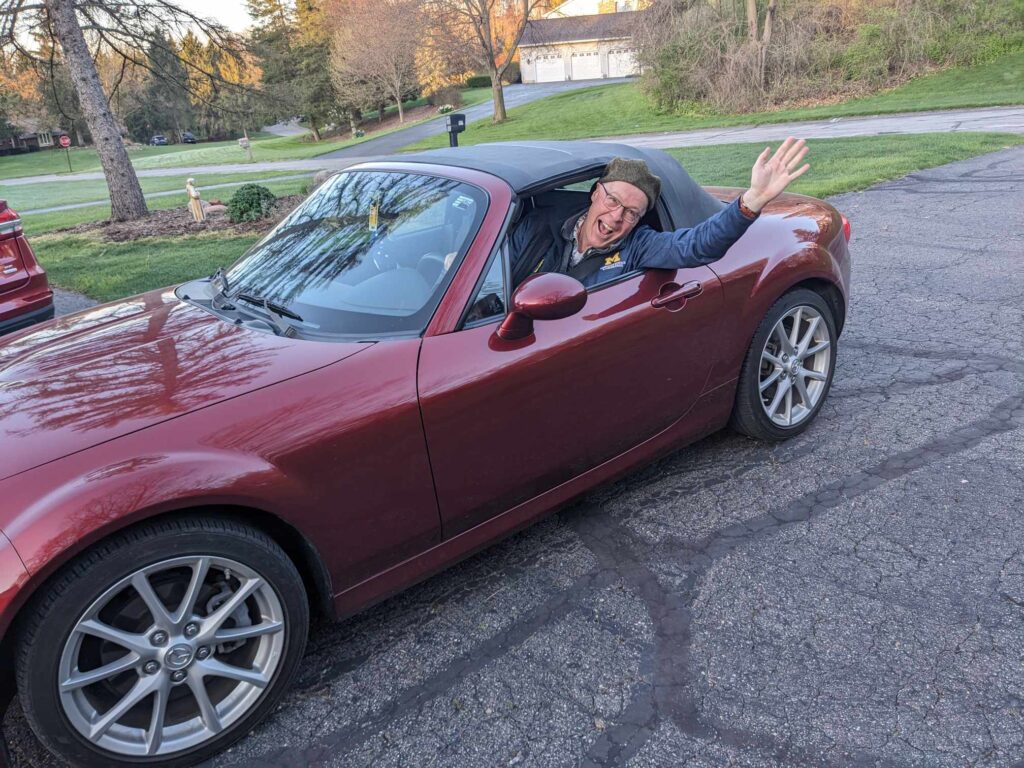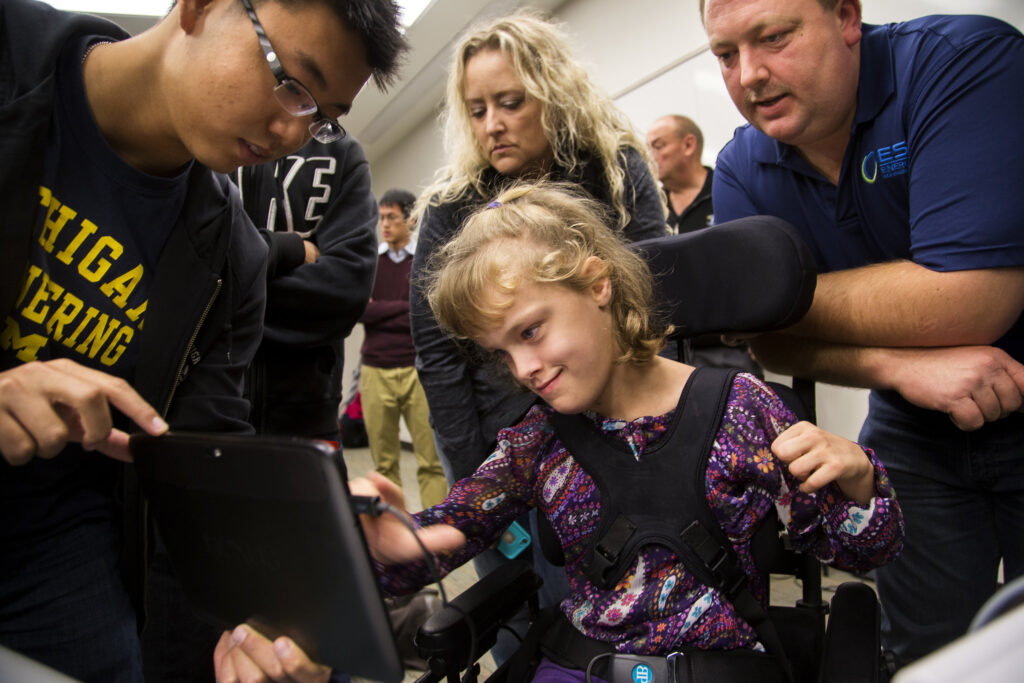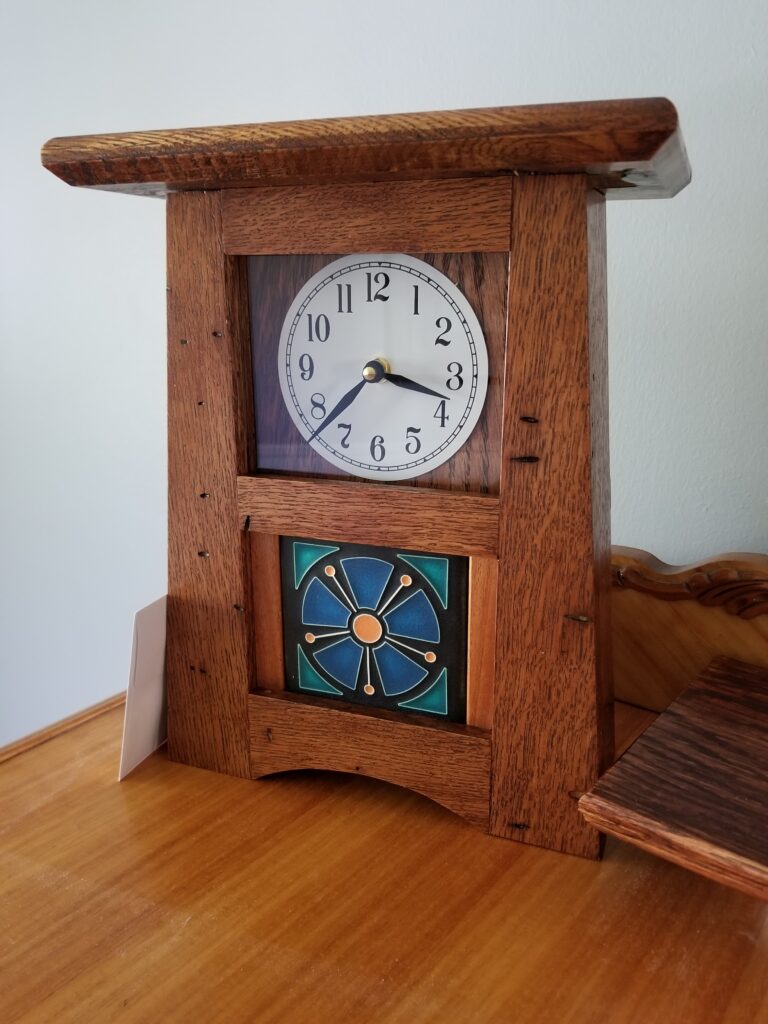David Chesney, champion of computing for the greater good, retires

David Chesney, Toby Teorey Collegiate Lecturer in Computer Science and Engineering and Teaching Professor, Electrical Engineering and Computer Science, will retire from the faculty on May 31, 2024 after 26 years at the University of Michigan.
For many years, Chesney has made a point of putting social context into his classes, cultivating in his students an approach that he calls “computing for the greater good.” In doing so, Chesney said, his mission has not been just to teach computer science, but to make better computer scientists.
Chesney was born in Detroit and grew up, as he describes it, “in the shadow of the automotive industry.” Everyone in his family was connected to it in some way, including his father, who worked for AAA of Michigan.
Perhaps as a result, Chesney grew up with an interest in mechanical things. “I was the kid at Christmas who unboxed and put together all of our nieces’ and nephews’ bicycles while everyone else was eating dinner,” recalls Chesney.
He also developed an early interest in cars, which continues to this day. “Deep down,” he said, “I’m still a car guy. I will cross the street if I spot a particularly interesting or beautiful car and will peek in at the interior to check it out.” Spoiler: Chesney will hit the road to retirement in his two-seat convertible Miata.

Like many in the Southeastern Michigan auto industry, Chesney’s family were “up north” people, and would spend the summers canoeing and boating, living in the family’s A-frame on the Tittabawassee River between Gladwin and West Branch. So when it became time to pursue a college education, he enrolled at the General Motors Institute (now Kettering University) in Flint. “It never crossed my mind to leave Michigan,” said Chesney.
At GMI, Chesney earned a bachelor of mechanical engineering, automotive option, while also working as a cooperative student and project engineer at the Central Foundry Division of GM.
Afterwards, he headed to Michigan State University to pursue his master’s in mechanical engineering, with support provided by a General Motors Corporation Fellowship. While there, he discovered – and became enamored with – artificial intelligence. As a consequence, his master’s thesis was on how to correct manufacturing scrap on a plant floor through integration with an expert system. “This work on an expert system for a manufacturing facility drove me over to the CS side, so I worked in AI for the next few years,” said Chesney, “It was fascinating.”
Chesney took a position at GM as a senior product engineer, where he evaluated computer tools for the foundry. This inspired him to return to Michigan State for a second master’s degree, this time in computer science, and ultimately a PhD in computer science. At the same time, he began working as an adjunct faculty member at Saginaw Valley State University, teaching mechanical design. It was then that he discovered his second professional love, teaching.
“I was on a fellowship program from GM to get my PhD,” recalled Chesney. “They paid half my salary, all my tuition, and I had a computer allowance and a book allowance. It was very generous, and I fully intended to return to GM afterwards.” But while Chesney was busy studying and teaching, GM went through a contraction. “When I was done with my PhD, I contacted GM and said ‘Here I am!’,” said Chesney. “To which they replied, ‘Who are you?’”
He did land a spot at GM in the Ypsilanti transmission plant, but he still had a love of teaching and would teach night classes at Eastern Michigan University. In 1998, an opportunity arose to become an adjunct lecturer in the EECS department at the University of Michigan, and in 2001 he left GM when he was hired as a full-time faculty member at Michigan.
“The PhD to me was not a vehicle toward research or a vehicle for contributions to the company, it was a vehicle towards teaching,” said Chesney. “It enabled me to do this thing I loved.” That is, teaching.
At U-M, Chesney’s initial effort was teaching EECS 281, Data Structures and Algorithms. He taught that for about a decade, became the cognizant faculty, and developed the slidedeck. He also taught EECS 203, 270, and 280 a couple of times each.
Beginning in 2003, he developed and began teaching a summer outreach camp called “It’s all about the music.” Through this camp, he worked to engage middle school students – and especially girls – in computer science or other STEM fields through a focus on music and engineering.
“The biggest catalyst for this focus was the fact that I am the father of three girls,” said Chesney. “As my girls got older I started doing research into what keeps girls and young women engaged in STEM. The answer is that it’s all about context. Discrete math and algorithms are still important to know, but it’s also what you can do with this knowledge once you know about it.”
Chesney’s teaching style also evolved to include storytelling, which he used to break up lectures and keep students interested. In 2006, he published a paper at the American Society of Engineering Educators (ASEE) Conference on the subject entitled, “Big Fish: The Lost Art of Story-Telling in the Engineering Classroom,” in which he described story-telling as an improvement to traditional teaching techniques and talked about when to use storytelling.
He followed this with “Big Fish II: The Lost Art of Story-Telling in the Engineering Classroom” in 2007, which talked about how to use storytelling in the classroom. This paper received a Best Paper Award at ASEE. In 2010, he published “Big Fish III: But, Does Story-Telling Work?,” which examined whether storytelling improved student performance.
About 2009, Chesney made the transition from teaching core EECS courses to teaching the ‘bookends’: the courses at the beginning and end of the curriculum. He developed a section of ENG 100, and he also began teaching EECS 481, Software Engineering. In doing so, he leaned into context and storytelling.
His ENG 100 course was called Gaming for the Greater Good, and he used it to teach first-year students how to create computer games, and for context had them develop the games for children with autism. In EECS 481, students were required to complete a major project, and he encouraged them to develop projects that would have a positive social impact.

In 2010, this broad approach of “let’s do some social good” led to building a relationship with Mott Children’s Hospital, where over time Chesney met doctors, pediatric surgeons, rehabilitation specialists, and others including children who were patients with unique disabilities. The question, according to Chesney, was, “Can we use new technology to address some of the challenges faced by individuals with disabilities?”
Through this partnership, Chesney met 13-year-old Grace Simon in 2013, a girl with cerebral palsy who was the first young person with a disability that his students could work with directly. In the Fall of 2013, the students in EECS 481 met with a medical school representative, pitched ideas, formed into teams; then they built and demoed a number of assistive technologies for Grace.
In the years that followed, his students built assistive technology for the blind, interactive tactile structures as sensory tools for children on the autistic spectrum, solutions for an engineering student who returned to campus a decade after suffering a traumatic brain hemorrhage, and an augmented reality solution that streamed a video feed of a patient’s viscera directly to the surgeon’s field of vision, helping them keep their eyes on their tools. Most recently, Chesney’s students have leveraged generative AI to develop accessibility-enhancing software systems.
In addition to finding challenges for his students to work on at Mott, Chesney constantly pushed forward with technology building blocks. Microsoft provided Kinect systems, and later, Hololens Augmented Reality headsets. Apple provided iPads. Additional equipment was donated for his classes by Dell, Intel, Hewlett-Packard, and others.

In 2014, his students were able to leverage the power of IBM’s Jeopardy-winning Watson cognitive computing system. Chesney also looked for technology deals, and snapped up laptops, Amazon Alexa systems, and any other tech that he felt might inspire or enable his students.
Chesney’s work has attracted attention. In 2010, he received the College of Engineering Thomas M. Sawyer, Jr. Teaching Award. He was invited to give a TEDx talk in 2013. In 2014, he received an IBM Faculty Award, and in 2016 he received the Provost’s Teaching Innovation Prize. In 2018 he received the U-M James T. Neubacher Award, and in 2020 was chosen for an EECS Outstanding Achievement Award. In 2018, he was named the Toby Teorey Collegiate Lecturer, and in 2023 he was awarded the title of Teaching Professor, a new designation at the University of Michigan which recognizes expertise and excellence by career teaching faculty.
In addition to his roles as educator and storyteller, Chesney has always been a woodworker. “Sometimes middle school classes have a long term effect on your life,” said Chesney. “In 7th grade, I took two electives: wood shop and drafting. One defined a life-long hobby for me, and the other defined a career direction.”
He put woodworking away until he completed his PhD. After that, said Chesney, “the first thing I did was buy tools to build my wife an Adirondack chair. I just enjoyed the art of woodworking and working with the tools to make something meaningful.” Today, he likens his woodworking tools to the algorithms and programming languages his students learn. They’re a means to an end, he says, tools for creating something good. “So I like to say: let’s build some furniture.”

In retirement, Chesney and his wife Jean will be moving north to Ludington, where they’ve had a summer place for years. Their home is located where they can sail and swim during the summer, about a mile from the lighthouse. There’s usually enough snow for skiing in the winter.
It seems like a natural destination for Chesney. But he’s bought a small camper and he also has plans to get out of this state he loves, for a little bit, and to visit the country’s national parks.
When he gets back, we’ll look forward to the stories.
 MENU
MENU 
